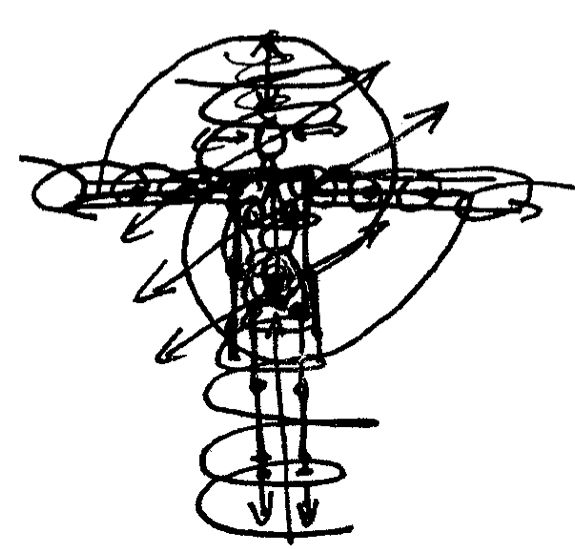Journal
July 4th, 2019 at Saari Residence, Finland.
I am making a proposal: PROPOSITION
Daria proposes to create a container to discern, reflect, experience, act, and support the process of feeling and/or assessing whatever-reality-is. The premise is that reality is perceived as processes of both assessing what is and experiencing it as a full bodymind experience wherein whatever is perceived becomes one with the perceiver; a form of recognition of what is at the moment that it is. She frames the real as transformative experience within the bodymind; a place of intra-action that will manifest as an experiment with nine participants. Each participant is a vessel and actor generating connections between inner and outer perceptions as one agent. Daria is the host and invocator of the experience, but its materiality manifests through all collaborators equally, in a physical space herein referred to as the mandala. Her movement is a thread running through the mandala. This threading continues to serve as matrix for the space even when Daria dissolves from the space. The container is the space of the DakiniMandala, a secret shared by all the collaborators. By way of definition,“dakini”derives from Tibetan tantric practice. Although the meaning of the word, by definition, defies definition, certain attributes apply. A Dakini is a fierce, female spirit of wisdom; an elusive, playful, wrathful sky dancer; principle of non-duality, surpassing gender definition; an inherent aspect of mind; formless nature of mind itself ; breath of tantra; totally uninterested in drab intellectual discussion. Through this secret, the Dakinis appear and dissolve as archetypes by means of images, words, objects, characters, colors and emotions. These elements take on different meanings as they are revealed by different people—a knife, someone dressed in a specific color, a stick, light changing direction and/or color, the atmosphere. Whatever appears in the process is not representational per se, but can be evocative and sometimes explicitly narrative. In the unfolding of the timespace enactment there are different phase, i.e., approaching, activated and dissolving phases. These phases are nonlinear and can happen all at once or separately. Activated phases are determined by the intentions of the actions while the audience is in a process of experiencing, or, as Tuomas would say, ‘audiencing.’ Collaborators are both holding the materiality of the space and activating it. Collaborators exist in relation to the mandala and therefore together as one, accompanying, supporting, witnessing, obstructing, interrupting, framing, etc. This is driven by kinesthesia, changes in the configuration of the seating areas, sounds, text, objects and actions. In this way it is constantly reconfigured by all intra-actions. The audience is an instrument of observation, as an honored guest and as a means of transformation. In the mandala, spacetime expands and contracts through different means. The seating can change the action and the action can change the parameters of the space. There are periods of contemplation and periods of actions in the form of narration. The means of expressions vary. The performers are also a practicing of acupuncture in the space. Daria dances alone and with others. There are different performers, appearing one by one, or together. At times there is only sounding, at other times, only reconfiguring space. There is reading. The space is empty and silent and the space is saturated and opaque.
REFLECTION
My mind is at least as big as the space right now — my body is at its best
and feels my mind — there is a place of instance in which all is always still!
How to perceive / experience “intra-action” as phenomena [me or we]
and not affect this stillness. What Samita Sinha said: when you dance
there is such a silence, it’s so still, and I was thinking is this what she meant?
The mind is at once an internal-external non-place.
Boundaries are acknowledged but not fragmenting.
The experience of the mind is a non-place intra-acting throughout the dance —
relating a concept from theorist Karen Barad to my score,
a dialogue between her writing and what it makes me work on.
Does dance monopolize spacetime in an exclusive way?
It’s really complicated but it looks simple. The assumption that dance
is showing who you are. There isn’t a dichotomy because the space of the body
is spacetime and movement can’t exist without being made of space,
like a flame burning or blazing. Look at me, look at me?
A child wanting something
where does the wanting come from?
To the point of crisis. Or a belief that something is right
(because this want is what we want) — where does that come from?
––a need behind the mind within
=
